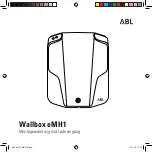
4–160
When Driving
Tire Pressure Monitoring System
CAUTION
Each tire, including the spare (if provided), should be checked monthly when cold and
inflated to the inflation pressure recommended by the vehicle manufacturer on the vehicle
placard or tire inflation pressure label. (If your vehicle has tires of a different size than the
size indicated on the vehicle placard or tire inflation pressure label, you should determine
the proper tire inflation pressure for those tires.)
As an added safety feature, your vehicle has been equipped with a tire pressure monitoring
system (TPMS) that illuminates a low tire pressure telltale when one or more of your tires
is significantly under-inflated. Accordingly, when the low tire pressure telltale illuminates,
you should stop and check your tires as soon as possible, and inflate them to the proper
pressure. Driving on a significantly under-inflated tire causes the tire to overheat and can
lead to tire failure. Under-inflation also reduces fuel efficiency and tire tread life, and may
affect the vehicle's handling and stopping ability.
Please note that the TPMS is not a substitute for proper tire maintenance, and it is the
driver's responsibility to maintain correct tire pressure, even if under-inflation has not
reached the level to trigger illumination of the TPMS low tire pressure telltale.
Your vehicle has also been equipped with a TPMS malfunction indicator to indicate when
the system is not operating properly.
The TPMS malfunction indicator is combined with the low tire pressure telltale. When the
system detects a malfunction, the telltale will flash for approximately one minute and then
remain continuously illuminated. This sequence will continue upon subsequent vehicle
start-ups as long as the malfunction exists. When the malfunction indicator is illuminated,
the system may not be able to detect or signal low tire pressure as intended. TPMS
malfunctions may occur for a variety of reasons, including the installation of replacement
or alternate tires or wheels on the vehicle that prevent the TPMS from functioning properly.
Always check the TPMS malfunction telltale after replacing one or more tires or wheels on
your vehicle to ensure that the replacement or alternate tires and wheels allow the TPMS to
continue to function properly.
To avoid false readings, the system samples for a little while before indicating a problem. As
a result it will not instantaneously register a rapid tire deflation or blow out.
Mazda6_8FH2-EA-16F_Edition1.indb 160
2016/05/10 19:23:46
Summary of Contents for 6 2017
Page 1: ...Mazda6_8FH2 EA 16F_Edition1 indb 1 2016 05 10 19 22 28...
Page 2: ...Mazda6_8FH2 EA 16F_Edition1 indb 2 2016 05 10 19 22 28...
Page 6: ...Mazda6_8FH2 EA 16F_Edition1 indb 6 2016 05 10 19 22 29...
Page 74: ...2 62 MEMO Mazda6_8FH2 EA 16F_Edition1 indb 62 2016 05 10 19 22 45...
Page 127: ...4 3 MEMO Mazda6_8FH2 EA 16F_Edition1 indb 3 2016 05 10 19 22 57...
Page 329: ...5 35 MEMO Mazda6_8FH2 EA 16F_Edition1 indb 35 2016 05 10 19 24 05...
Page 460: ...6 74 MEMO Mazda6_8FH2 EA 16F_Edition1 indb 74 2016 05 10 19 24 44...
Page 502: ...7 42 MEMO Mazda6_8FH2 EA 16F_Edition1 indb 42 2016 05 10 19 24 59...
Page 569: ...10 1 10 Index Mazda6_8FH2 EA 16F_Edition1 indb 1 2016 05 10 19 25 11...
















































